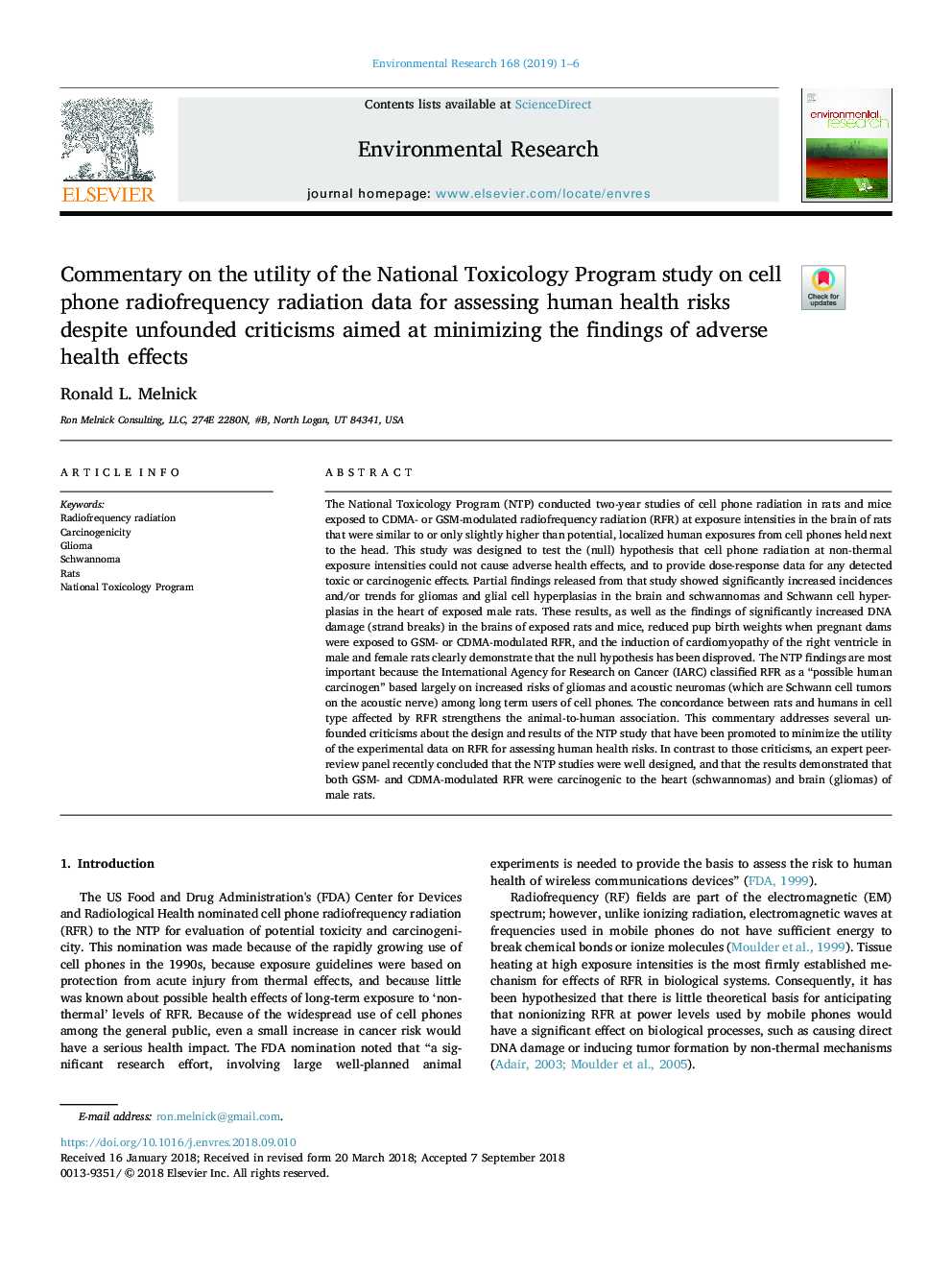| کد مقاله | کد نشریه | سال انتشار | مقاله انگلیسی | نسخه تمام متن |
|---|---|---|---|---|
| 10223641 | 1701040 | 2019 | 6 صفحه PDF | دانلود رایگان |
عنوان انگلیسی مقاله ISI
Commentary on the utility of the National Toxicology Program study on cell phone radiofrequency radiation data for assessing human health risks despite unfounded criticisms aimed at minimizing the findings of adverse health effects
ترجمه فارسی عنوان
تفسیر در مورد استفاده از برنامه ملی سم شناسی مطالعه بر روی داده های رادیوفرکانسی تلفن همراه برای ارزیابی سلامت انسان خطرات با وجود انتقادات ناخواسته با هدف به حداقل رساندن یافته های اثرات نامطلوب سلامتی
دانلود مقاله + سفارش ترجمه
دانلود مقاله ISI انگلیسی
رایگان برای ایرانیان
کلمات کلیدی
تابش رادیوفرکانسی، سرطان زایی گلیوما، شوانوما، موش برنامه سم شناسی ملی،
موضوعات مرتبط
علوم زیستی و بیوفناوری
علوم محیط زیست
بهداشت، سم شناسی و جهش زایی
چکیده انگلیسی
The National Toxicology Program (NTP) conducted two-year studies of cell phone radiation in rats and mice exposed to CDMA- or GSM-modulated radiofrequency radiation (RFR) at exposure intensities in the brain of rats that were similar to or only slightly higher than potential, localized human exposures from cell phones held next to the head. This study was designed to test the (null) hypothesis that cell phone radiation at non-thermal exposure intensities could not cause adverse health effects, and to provide dose-response data for any detected toxic or carcinogenic effects. Partial findings released from that study showed significantly increased incidences and/or trends for gliomas and glial cell hyperplasias in the brain and schwannomas and Schwann cell hyperplasias in the heart of exposed male rats. These results, as well as the findings of significantly increased DNA damage (strand breaks) in the brains of exposed rats and mice, reduced pup birth weights when pregnant dams were exposed to GSM- or CDMA-modulated RFR, and the induction of cardiomyopathy of the right ventricle in male and female rats clearly demonstrate that the null hypothesis has been disproved. The NTP findings are most important because the International Agency for Research on Cancer (IARC) classified RFR as a “possible human carcinogen” based largely on increased risks of gliomas and acoustic neuromas (which are Schwann cell tumors on the acoustic nerve) among long term users of cell phones. The concordance between rats and humans in cell type affected by RFR strengthens the animal-to-human association. This commentary addresses several unfounded criticisms about the design and results of the NTP study that have been promoted to minimize the utility of the experimental data on RFR for assessing human health risks. In contrast to those criticisms, an expert peer-review panel recently concluded that the NTP studies were well designed, and that the results demonstrated that both GSM- and CDMA-modulated RFR were carcinogenic to the heart (schwannomas) and brain (gliomas) of male rats.
ناشر
Database: Elsevier - ScienceDirect (ساینس دایرکت)
Journal: Environmental Research - Volume 168, January 2019, Pages 1-6
Journal: Environmental Research - Volume 168, January 2019, Pages 1-6
نویسندگان
Ronald L. Melnick,
